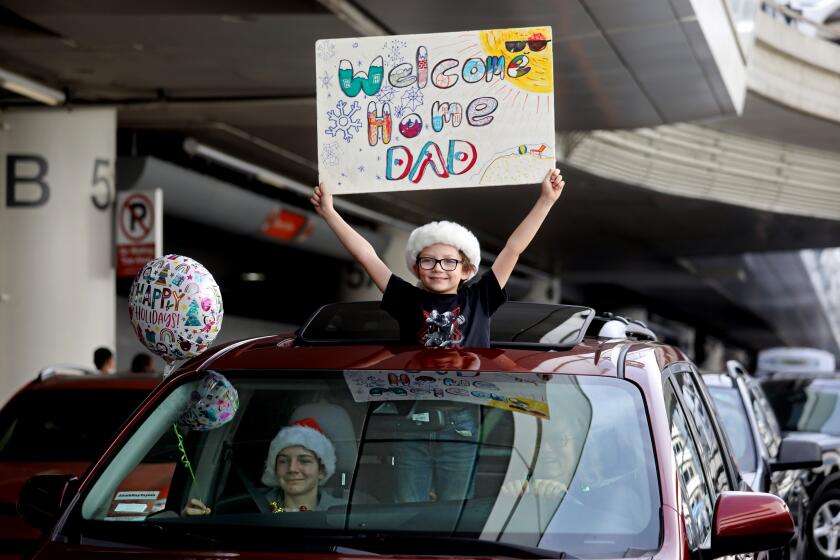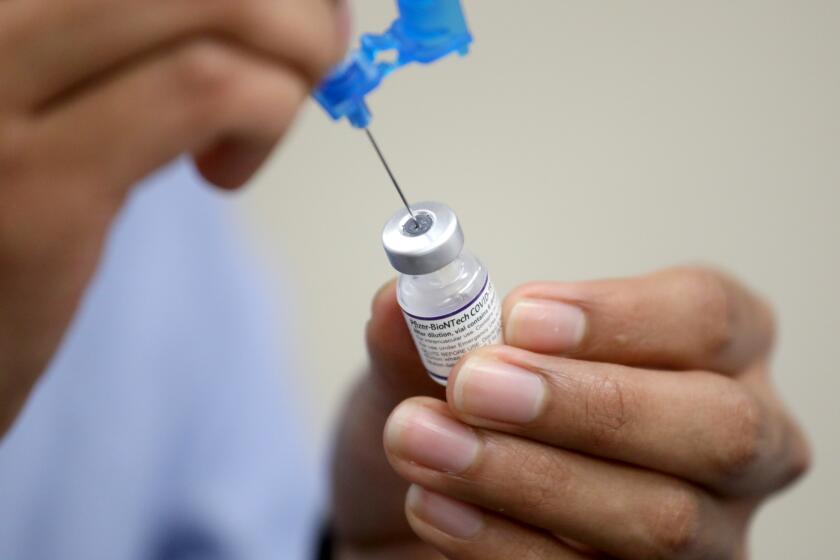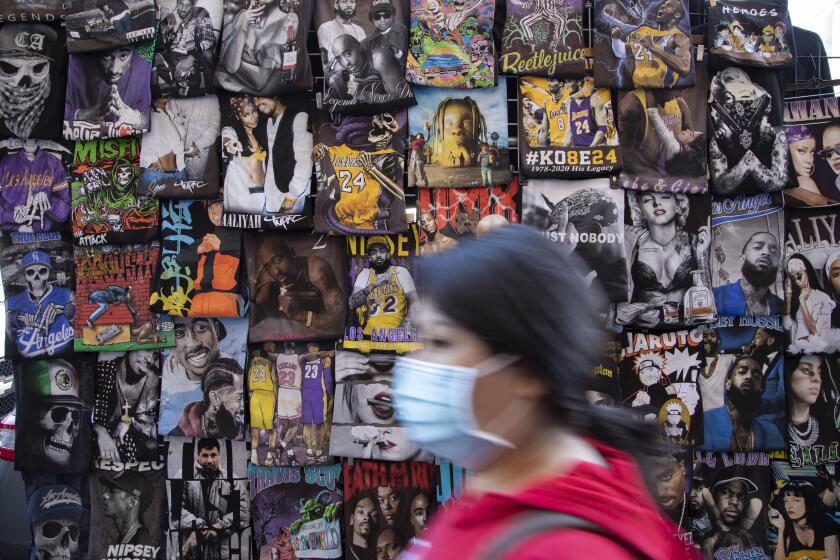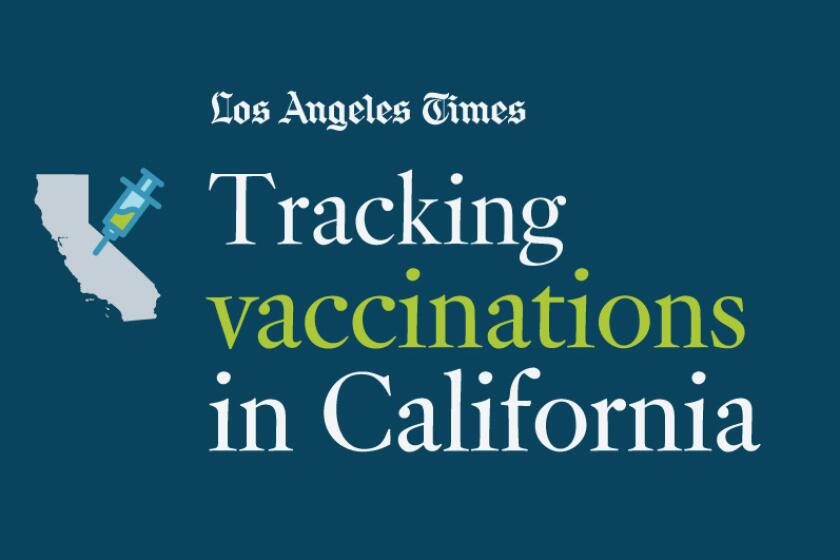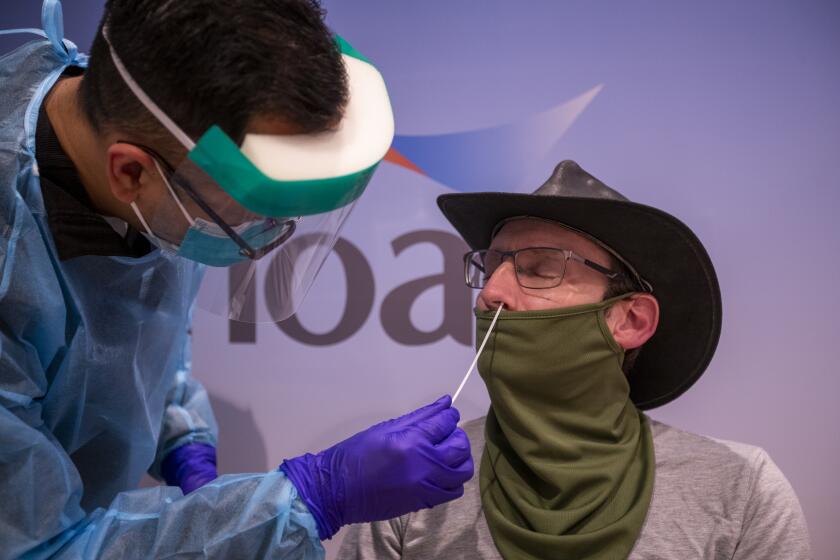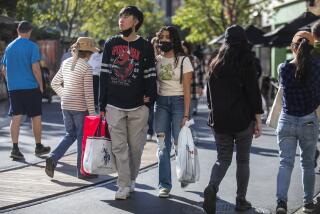California Omicron surge arrives as cases spike, officials warn of tough weeks ahead
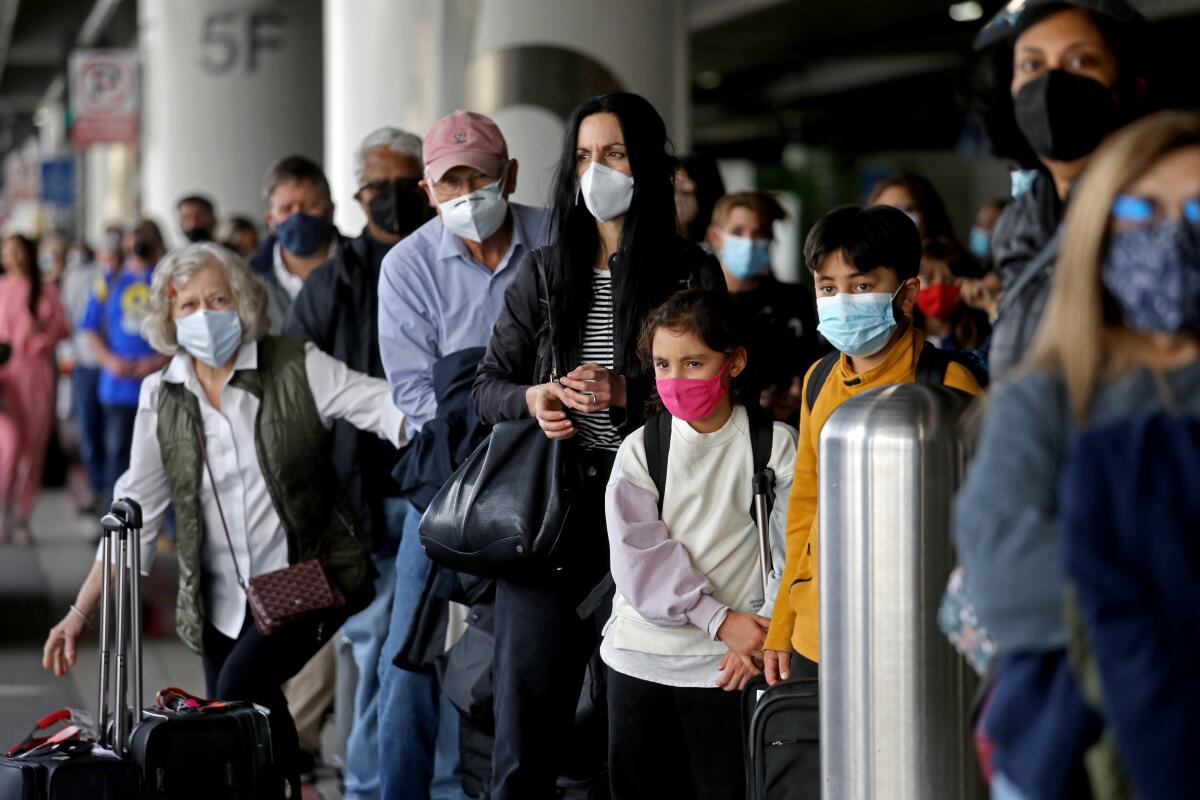
The Omicron surge has hit California, with new coronavirus cases climbing rapidly and public health officials in some parts of the state warning that hospitals could be hit hard by a surge in patients in the coming weeks.
Data show new coronavirus cases in the state jumping in recent days, with Los Angeles County health officials expecting the Omicron variant to overtake the Delta strain within two weeks. But officials stressed that vaccinations, and especially booster shots, will give Californians who receive them strong protection against serious illness, which could make the coming surge less deadly than last year’s devastating winter.
“It’s not a time to panic, but a time to be vigilant,” said San Francisco Health Director Dr. Grant Colfax.
Whether hospitalizations will surpass last year’s numbers depends on several factors: how severe Omicron ends up being and whether residents comply with mask mandates, avoid crowded risky indoor public settings and get vaccinated or boosted.
Up to 3.5 million people are expected to travel through LAX from Dec. 16-Jan. 3, airport officials said, making it the busiest travel period this year.
But this much is certain. Omicron has arrived in California, and a surge has begun. Coronavirus cases are increasingly linked to the new variant, and officials in L.A. and San Francisco expect a challenging season for hospitals, possibly rivaling last winter’s surge.
Officials say there are still no plans for lockdowns or business closures, suggesting that frequent testing and vaccinations make stay-at-home orders an outdated strategy.
Cities are taking other preemptive approaches, such as Oakland’s move this week to join Los Angeles, San Francisco, West Hollywood and Berkeley in requiring proof of vaccination to patronize indoor restaurants and gyms. San Jose’s mayor wants to require all city employees to receive booster shots as a condition of employment and anyone who enters city-owned facilities to do the same.
Seven UC campuses have delayed in-person return to campus, and all UC and Cal State campuses will require boosters for eligible students. Gov. Gavin Newsom has required boosters for healthcare workers in hopes of protecting the medical community as hospitals fill.
Omicron surge could hit some parts of California much harder than others, with the Bay Area poised to weather the impact the best and the Central Valley the worst.
Omicron now constitutes 73% of the nation’s coronavirus cases, up from 13% the week before. Los Angeles County on Tuesday confirmed 102 new cases of the highly mutated variant. That is more than twice the 49 total confirmed Omicron cases that had been reported statewide to the California Department of Public Health as of last Wednesday.
By Wednesday, there had been 191 confirmed cases associated with the Omicron variant reported to the state.
“Within the next two weeks, it’s almost all going to be Omicron,” Los Angeles County Public Health Director Barbara Ferrer said.
“You should assume it’s Omicron,” Ferrer said the county now tells newly infected residents, “and ... that you’re really isolating because you’re highly infectious.”
Delta remains a huge issue, too. Los Angeles County is experiencing a “staggeringly fast rise” in newly confirmed coronavirus cases, with more than 6,500 additional infections reported Wednesday alone, according to a top health official. The latest caseload, 6,509, is more than double the total reported Tuesday.
According to a Times analysis of state data, San Francisco is reporting 192 coronavirus cases a week for every 100,000 residents as of Tuesday, a 315% jump since Dec. 1. The rate for Los Angeles County is 198, a 170% jump; and Orange County’s rate is 102, a 49% increase over the same time period.
A weekly coronavirus case rate of 100 or more new infections for every 100,000 residents is considered high, a level that places counties in the worst tier of the U.S. Centers for Disease Control and Prevention’s four-stage scale.
“We are experiencing the surge that we have been anticipating was coming,” Colfax told San Francisco health commissioners this week. “We are seeing a very large — and expect to be sustained — increase in cases.”
Health authorities in Los Angeles County expressed even greater concern about Omicron’s potential impact on hospitals.
There is no certainty whether the variant results in similarly severe illness as Delta or produces less severe symptoms. The answer to that question, however, could help determine whether L.A. County’s hospitals could be overwhelmed again this winter.
The CDC said Omicron is spreading rapidly not only because it is more transmissible, but also because it has a better chance of infecting people, even those who have been vaccinated or previously infected.
Ferrer said early data suggest Omicron is about three times as likely to cause an infection than the Delta variant. One study from Britain suggests that surviving a coronavirus illness now offers relatively little protection against reinfection and that Omicron poses a risk for reinfection five times higher than that of other variants.
Vaccinated people — if they end up getting a breakthrough infection — are likely to become less severely ill from Omicron, especially if they have received a booster shot.
L.A. County confirms 60 new cases of the highly mutated variant. That exceeds the 49 total confirmed Omicron cases reported statewide last week.
Ferrer cited several scenarios for the coming winter, the worst being Omicron — while being far more contagious than Delta — causing the same severity of illness as Delta, with no changes in vaccination rates, booster uptakes or social distancing. That could mean California’s COVID-19 hospitalizations would be twice as bad as last winter, rising to 50,000 patients statewide, from a high of nearly 22,000 last year.
“And it’s made an even more unbearable thought by the healthcare worker burnout and staffing shortages that have followed, not only in California, but nationwide, in the wake of that terrible time,” Ferrer said.
If Omicron’s disease severity is half as bad as Delta’s, those gains are overturned by the new variant’s ultra-contagiousness. If vaccine and booster doses do not improve, that would still result in a “nightmare scenario” for the state and L.A. County, Ferrer said.
The most hopeful situation would be if Omicron’s disease severity is half of Delta’s and the state can double its booster uptake, raise its vaccination rate to 80% and lower the number of residents’ close contacts for the next month. That would result in a statewide winter peak of 10,000 COVID-19 patients by late January — about half last winter’s surge and 20% worse than the summer Delta wave.
“Although 10,000 hospitalizations ... across the state are far more than we ever want to see, it is more manageable than the alternatives,” Ferrer said. “Realistically, to avoid the worst of the scenarios, we need to work right now to increase vaccinations and booster uptake.”
As of Tuesday, California had 3,589 people with COVID-19 in its hospitals.
Experts say about most Americans will need to be vaccinated to bring the coronavirus pandemic under control. Track California’s progress toward that goal.
In Los Angeles County, 66% of residents of all ages are fully vaccinated, according to county data. In San Francisco, that number is 80%.
High rates of vaccination and booster shots are among the reasons why San Francisco health officials seem optimistic that a winter COVID-19 hospitalization surge can be weathered.
Last year’s wave of hospitalized COVID-19 patients in San Francisco was far less than the one that hit L.A. County. San Francisco never observed the kind of crisis in its hospitals that L.A. County did.
At its peak last winter, San Francisco had as many as 259 COVID-19 patients hospitalized — a record hit on Jan. 12. Projections released by Colfax show it’s plausible there could be more than 500 COVID-19 hospitalizations in San Francisco this winter.
Colfax said the city’s hospitals will be facing a “challenging time,” but he did not suggest they would be overwhelmed. In fact, he said the city is well-equipped to handle the wave of Omicron cases, given its extraordinarily high vaccination rates.
“So we are in a much better place because of all the commitment and hard work San Franciscans have done in getting fully vaccinated and ... getting boosted when they are eligible,” he said.
In terms of boosters, San Francisco still has work to do — but it is better placed than other places. As of last week, nearly 50% of San Franciscans eligible for a booster had received one, compared with about one-third of those eligible nationwide, Colfax said.
The city has not had a jump in hospitalizations; it usually takes 10 to 14 days after a rise in coronavirus cases are reflected in more hospitalizations, Colfax said.
New cases could reach record levels. What is being reported in places like Britain and New York City likely will hit San Francisco soon, Colfax said.
“The timeline for Omicron spread is days, not weeks, as it was for Delta,” he said.
More to Read
Sign up for Essential California
The most important California stories and recommendations in your inbox every morning.
You may occasionally receive promotional content from the Los Angeles Times.
